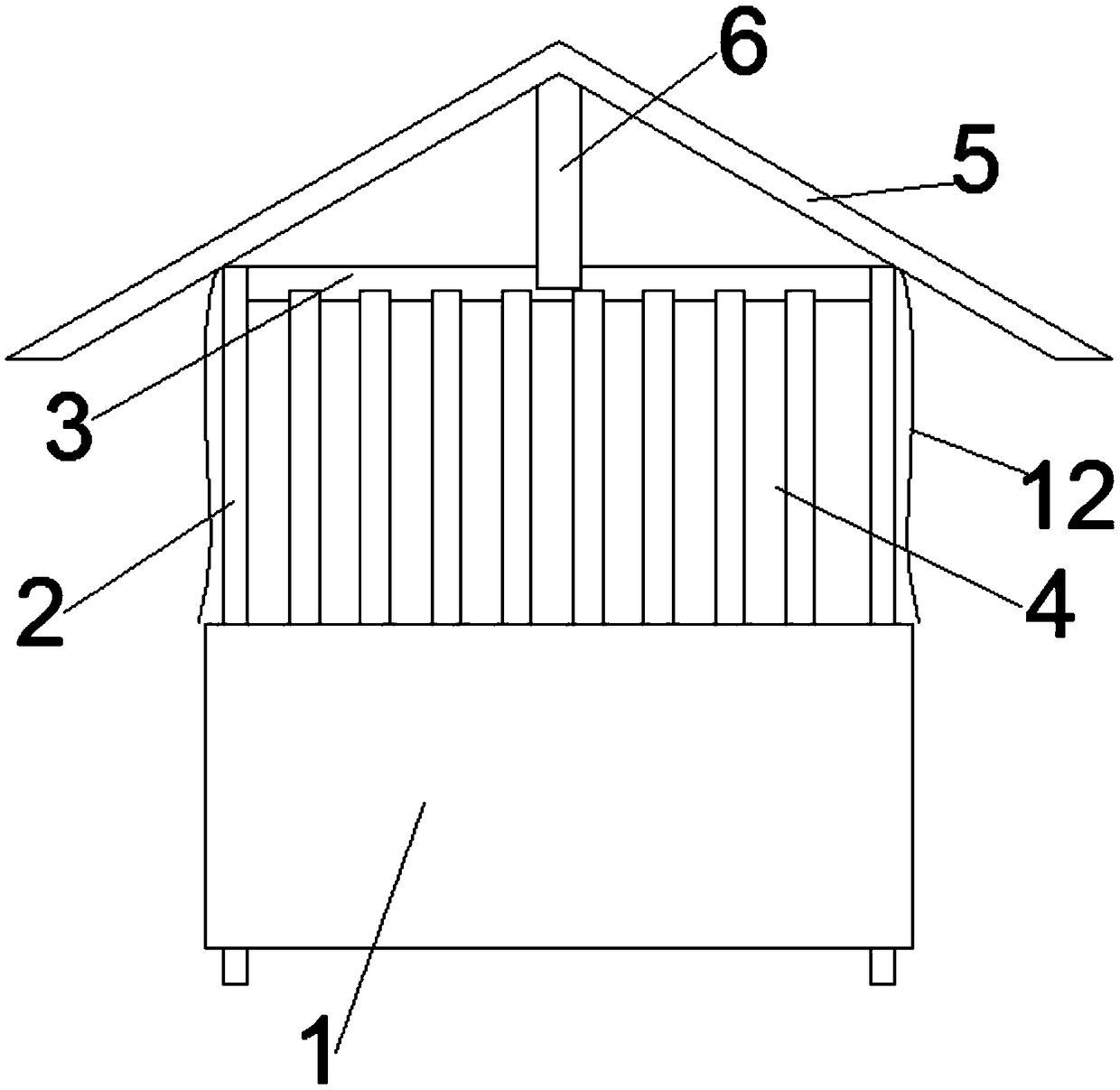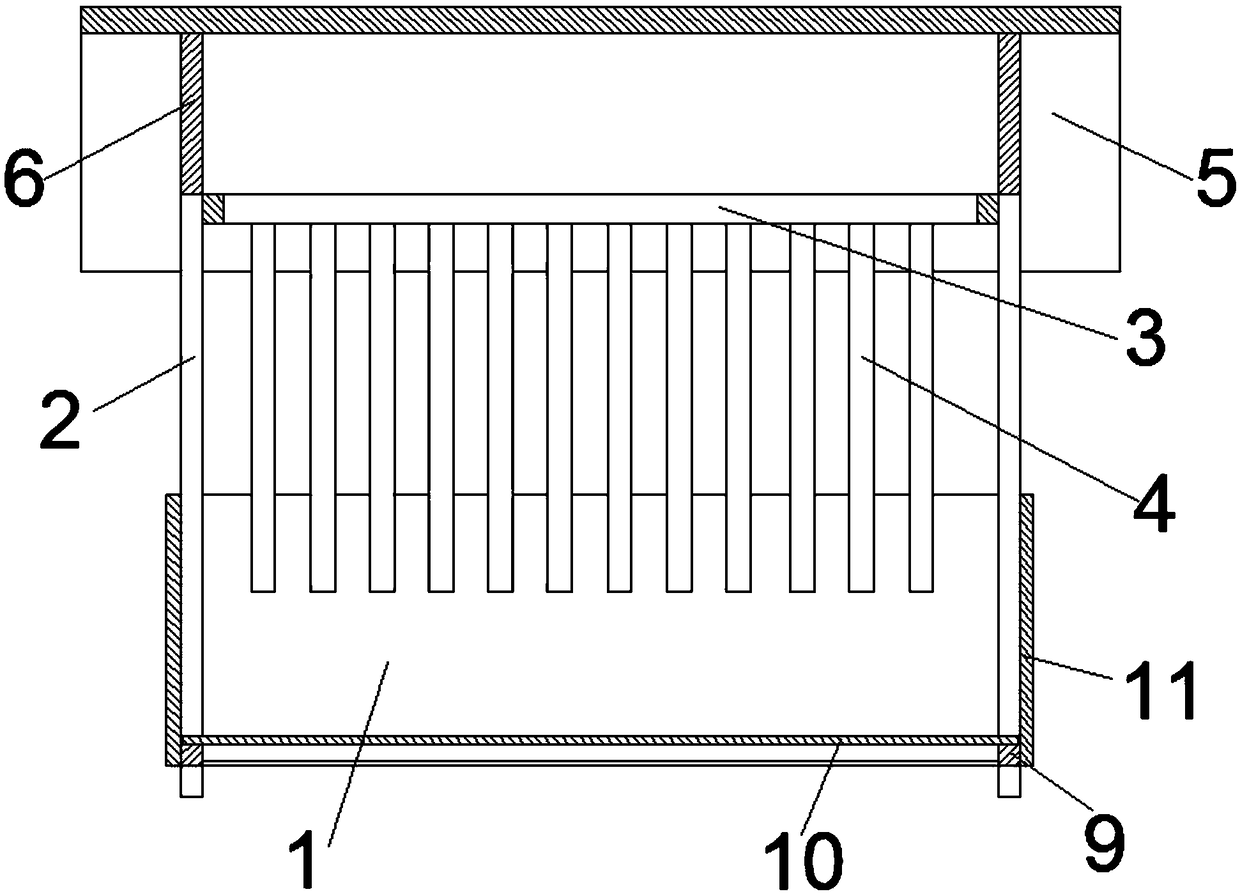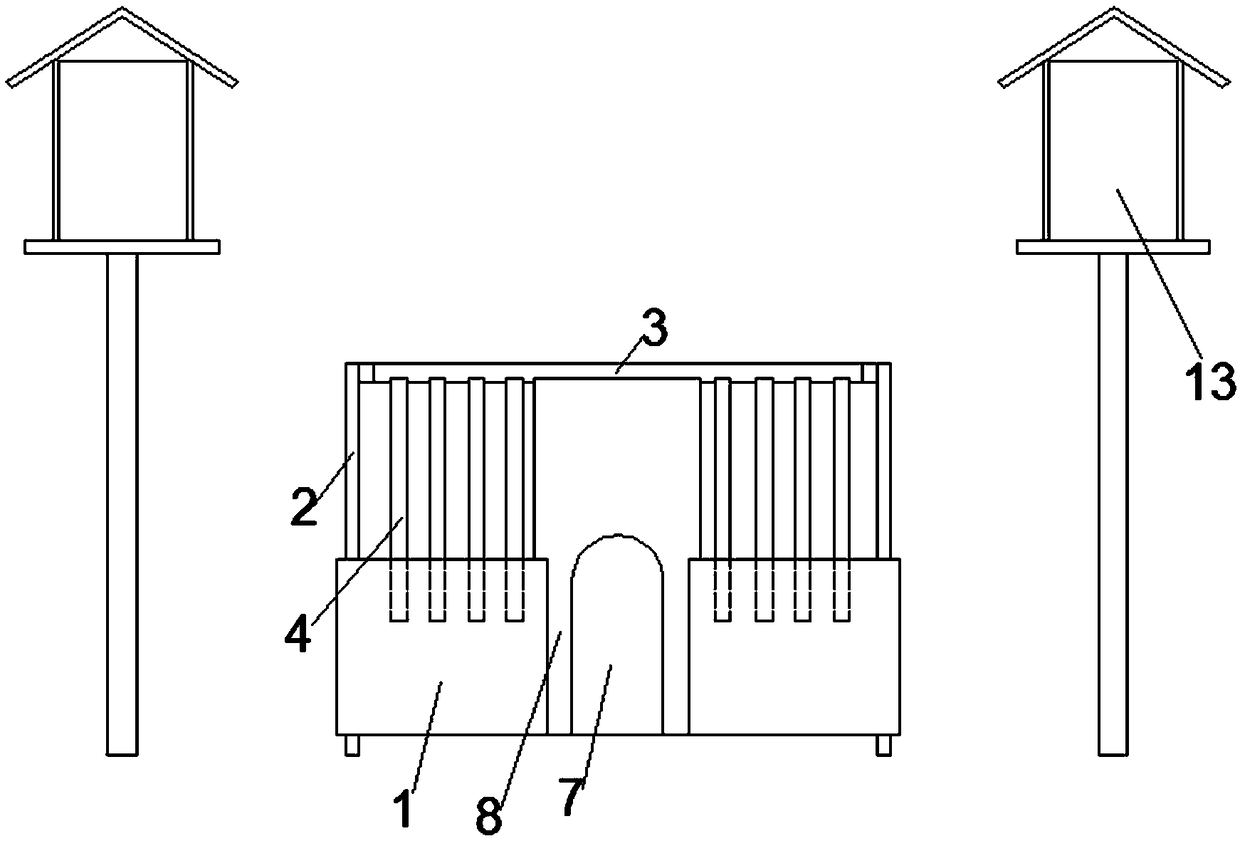Native chicken queuing egg laying breeding method
A breeding method and technology for native chickens, applied in the field of breeding vertebrates, can solve the problems of cross-flow of dirt or even salinization, related problems cannot be changed, local forest floor knots, etc., to reduce the probability of chicken disease, facilitate ventilation, Improve cleaning effect
- Summary
- Abstract
- Description
- Claims
- Application Information
AI Technical Summary
Problems solved by technology
Method used
Image
Examples
Embodiment Construction
[0029] The preferred embodiments of the present invention will be described in detail below with reference to the accompanying drawings.
[0030] Such as Figure 1-3 Shown is the structural representation of the cultivation method of native chickens queuing to lay eggs of the present invention; The present invention discloses a cultivation method of native chickens queuing and laying eggs of the present invention, and its steps are:
[0031] 1) Selection of native chicken breeds: According to the differences in omnivorous characteristics of local breeds, modern genetic breeding techniques and means are used to introduce Guangxi Yao chicken, Tibet Tibetan chicken and Gushi chicken, and are formed by strict breeding and selection of hybrid combinations Variety, this variety has excellent herbivorous and insect-catching performances in terms of omnivory, and good environmental stress resistance;
[0032] 2) Centralized brooding. When the chicks have weak disease resistance, cent...
PUM
| Property | Measurement | Unit |
|---|---|---|
| Length | aaaaa | aaaaa |
| Width | aaaaa | aaaaa |
| Height | aaaaa | aaaaa |
Abstract
Description
Claims
Application Information
 Login to View More
Login to View More - R&D
- Intellectual Property
- Life Sciences
- Materials
- Tech Scout
- Unparalleled Data Quality
- Higher Quality Content
- 60% Fewer Hallucinations
Browse by: Latest US Patents, China's latest patents, Technical Efficacy Thesaurus, Application Domain, Technology Topic, Popular Technical Reports.
© 2025 PatSnap. All rights reserved.Legal|Privacy policy|Modern Slavery Act Transparency Statement|Sitemap|About US| Contact US: help@patsnap.com



